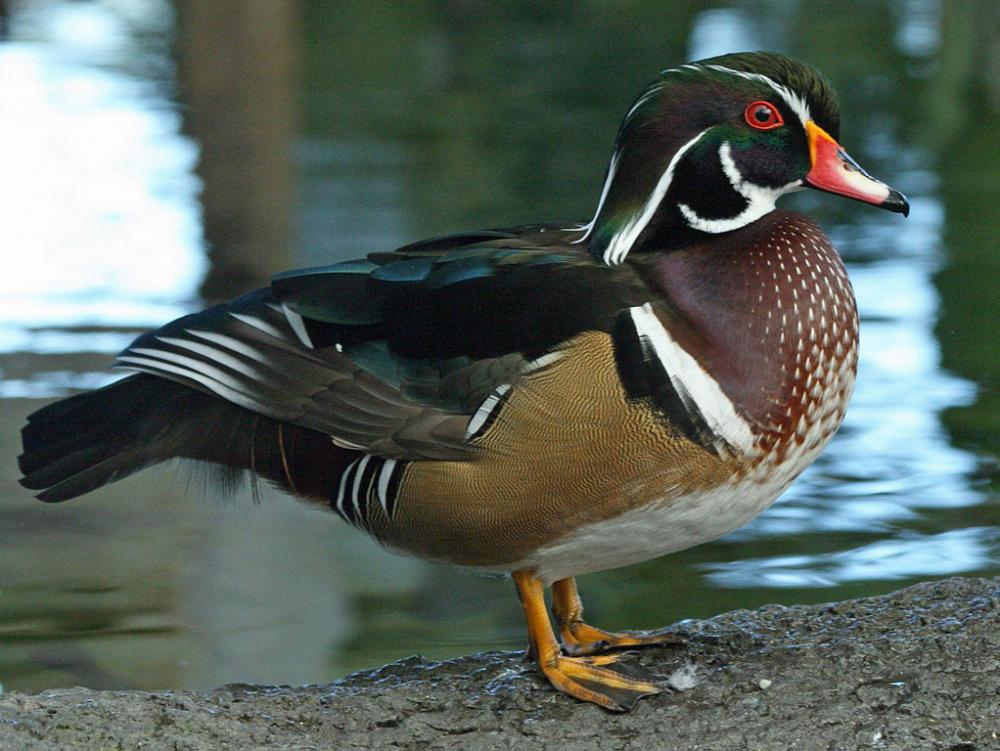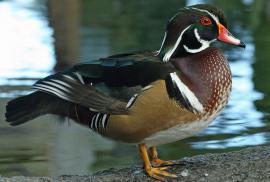Guide to Boreal Birds
Overview
One of the most beautiful of American waterfowl, the Wood Duck was hunted nearly to extinction during the late 19th and early 20th centuries. In 1918 the hunting season was closed, and for the next two decades numbers rose steadily. There are now well over a million Wood Ducks in North America. The Wood Duck's habit of nesting in cavities enables it to breed in areas lacking suitable ground cover. The young leave the nest soon after hatching, jumping from the nesting cavity to the ground or water. Once out of the nest, they travel through wooded ponds with their mother. Snapping turtles take a heavy toll of the young.
Description
17-20" (43-51 cm). A beautiful, crested, multicolored duck. Male patterned in iridescent greens, purples, and blues with distinctive white chin patch and face stripes; bill mainly red; tail long. Female grayish with broad white eye ring.
Voice
Female, loud wooo-eeek!; male, softer jeee? or ter-weeeee?
Nesting
9-12 whitish or tan eggs in a nest made of down in a natural tree cavity or a man-made nest box, sometimes up to 50' (15 m) off the ground.
Habitat
Wooded rivers and ponds; wooded swamps. Visits freshwater marshes in late summer and fall.
Range/Migration
Breeds from British Columbia south to California, and from Montana east to Nova Scotia and south to Texas and Florida; absent from Rocky Mountains and Great Plains. Winters near Pacific Coast north to Washington, and to New Jersey in East, rarely farther north.



